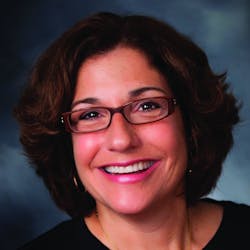As you know, Medical Laboratory Professionals Week, which originated in 1975, occurs each year in April. In 2021, it will occur April 18-24, 2021.
The activities associated with the week-long event are coordinated each year by a committee with representatives from 17 national clinical laboratory organizations.
While it is always an opportunity to reflect on the work of clinical laboratories, this is particularly true in 2021, given the work laboratorians have done to manage diagnostic services for COVID-19 while also providing routine the testing associated with hospital stays, surgeries, chronic diseases, and health checkups.
It has been more than a year since the World Health Organization (WHO) in January 2020 first released information about a cluster of pneumonia cases in Wuhan, China, and then two months later, characterized the COVID-19 outbreak as a pandemic.
Since that time, U.S. labs have been at the center of efforts to care for COVID-19 patients and to track the spread of the virus. From the beginning of the outbreak until March 7, 2021, when it ceased reporting data, The COVID Tracking Project said the United States had processed 363,824,818 COVD-19 tests, including 28,756,184 positive results.
Rising to the challenge, laboratorians have adopted management practices that have allowed them to ramp up testing. This has included bringing new analyzers online, sourcing reagents and test kits, and purchasing personal protective equipment (PPE). They also have trained staff from other departments in the lab in molecular testing and automated processes throughout diagnostic and billing workflows.
Medical Laboratory Observer’s 2021 Lab of the Year and Runner Up shared with us many examples of steps they have taken to help their patients during the pandemic.
St. Luke’s University Health Network Laboratory Services – MLO’s 2021 Lab of the Year – provided test collection kits to nine nursing homes (in addition to the three facilities that St. Luke’s owns) and then processed the tests, including those for surveillance, with an average turnaround time (TAT) of 24 hours.
St. Luke’s also provided analyzers, reagents, training, and ongoing supervision to five local colleges, allowing the on-campus providers to perform multiplex testing for COVID-19, flu A/B and RSV.
Meanwhile, MLO’s Lab of the Year Runner Up – the U.S. Air Force School of Aerospace Medicine’s Epidemiology Laboratory – averaged a TAT of 16 hours for SARS-CoV-2 polymerase chain reaction (PCR) tests. Up through the COVID-19 surge over the summer, the Epi Lab completed 34 percent of all COVID-19 tests at the Department of Defense (DOD).
The work at these organizations is representative of what labs across the country and have achieved in the battle against COVID-19.
But in addition to reflecting on the work of the past year, Medical Laboratory Professionals Week also presents an opportunity for the 300,000 U.S.-based practitioners of clinical laboratory science to build on consumers’ new-found appreciation of the role clinical testing plays in managing both collective and individual health. I encourage you to talk to your peers in the healthcare industry, as well as your friends and family, about how important it is for the United States to invest in laboratories of all kinds – from those at hospitals and doctor’s offices to those at state and local health departments.
I welcome your comments, questions, and opinions – please send them to me at [email protected]

